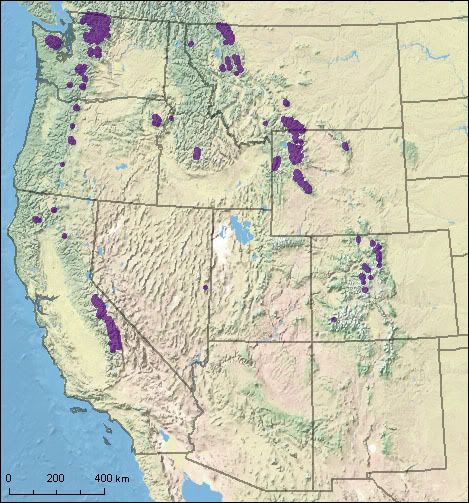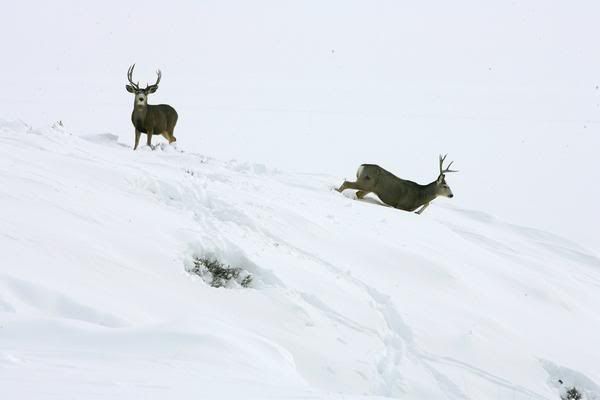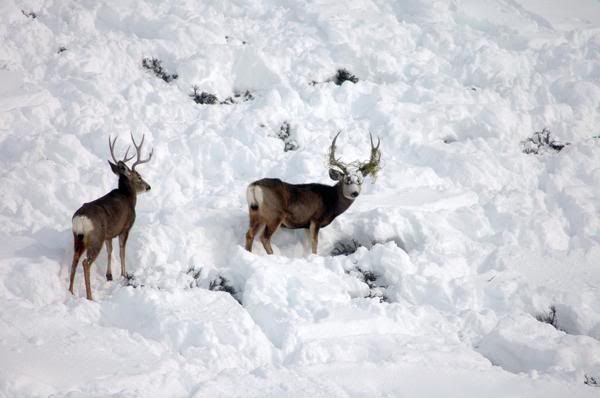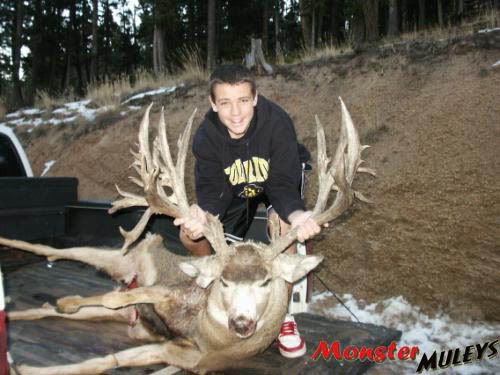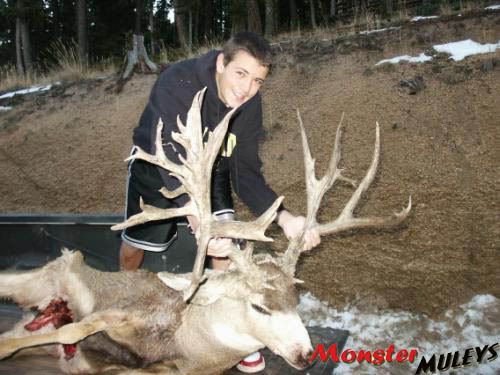By DAVE BUCHANAN
The Daily Sentinel
Wednesday, June 04, 2008
GUNNISON — You smell the deer before you see them. Tucked up in the big rocks, flopped among the riparian downfall of cottonwoods and willows, or simply lying on an open slope, legs sprawled like a marionette whose strings had been cut.
These are the remains of the deer that died around the Gunnison Basin during the past winter, an unpleasant but totally natural extension of what happens when Mother Nature takes a hand in managing wildlife populations.
No one will ever know exactly how many of deer and elk died this winter in the vast basin. The elk likely fared as elk always do in winter: They get by. Elk are big enough to survive a rough snow year, although there is some mortality every winter.
…“Only two things kill an elk — a bullet or a bumper.”
Deer, however, are the pawns in this life-and-death chess game. Fragile, thin-skinned, not big enough or strong enough to plow through deep snow and with a frustrating tendency to gather in small groups in isolated places.
The Colorado Division of Wildlife estimated there were 20,000 mule deer in the Gunnison Basin going into the winter. By the end of the feeding program, the DOW estimated 9,400 were receiving a daily ration of feed.
The fate of the rest? That’s part of why DOW terrestrial biologist Scott Wait, DOW seasonal biologist Leslie Spicer, and a curious reporter are hiking the steep hills west of Gunnison looking for deer carcasses.
Our efforts, and those of several similar teams of monitors, is to offer some statistical data about winter mortality, an effort to indicate how many deer perished in what was reported as the snowiest winter the basin has seen since record-keeping began in 1915-16.
The surveys were relatively simple. Half-mile squares were plotted with Global Positioning System accuracy on topographic maps. Each day during the weeklong survey, teams of at least two people would walk one or more plots, counting all the deer they could see along a series of compass-line transects that covered the square.
Walk a half mile, move a quarter-mile, walk a half-mile back, repeat.
Monitors counted only the carcasses seen from the transect line. While some carcasses might have been missed, it’s surprising what you can see (and smell) when looking for a dead deer.
That initial transect was at the Beaver Creek State Wildlife Area, which was expected to have the highest carcass count of all transects. Of the 131 feeding sites around the area, Beaver Creek was the busiest, feeding an estimated 450 deer per day at the height of the program.
Normal winter deer mortality is about 15-18 percent, according to the DOW. Given the severity of the past winter, you might expect deaths to hover around the high end of the estimate.
We hadn’t reached the GPS starting point when we found (smelled) the first carcass.
“It’s out of the transect so we can’t count it,” Wait said. “I think we’ll find others.”
Sometimes the carcass would be up in the rocks, and Wait surmised the deer died huddled next to sun-warmed boulders or while scraping for forage revealed by melting snow. Sometimes the bodies were scattered on an open slope, simply toppled over where death overtook them.
Most of the carcasses were found near the creek, where steep slopes fell into a creek bottom jammed with jackstrawed trees and leg-trapping willows. Any winter-weakened deer that somehow fell or slipped into the jam of logs would have little chance of escape. It was in those tight quarters we found most of the 89 carcasses we counted on the transect.
That’s nearly 20 percent of the deer reportedly being fed, high but not way outside the estimate. And given the conditions, not surprising, either.
“Deer will use willows and trees for thermal cover and some of these probably were looking for some relief when they got down here,” Spicer said. “But you can see how the willows were bent over from the weight of the snow, so there probably wasn’t much shelter down here.”
There were a lot of fawns, which was expected, but few mature bucks, which runs counter to the theory that older bucks, stressed by rut and running nearly on empty, are among the first to die in a tough winter.
Other counters may have found more buck carcasses but those results aren’t yet available.
The other three surveys in which I participated, two along the deer-rich slopes of Cochetopa Creek east of Gunnison and the last in the Hartman Rocks area south of town, turned up very few carcasses. On the Cochetopa, one of those surveys had four carcasses, the other had three.
At Hartman Rocks, also a feeding site, there were four deer carcasses and one pronghorn carcass.
The final tally won’t be exact, since exactitude is a rarity in wildlife management anyway. But it may help biologists better understand the health of the deer herds and equally important, the health of the land.
No one yet is drawing any conclusions. But it’s likely thousands of deer survived the winter thanks to the efforts of the DOW and the diligent volunteers who went out for 130 straight days to toss down bags of feed. Also, thousands more deer survived by finding south-facing slopes where snow cover was lighter.
But many deer died, and in response to local outcry, the Colorado Wildlife Commission drastically reduced doe hunting licenses for this fall in the Gunnison Basin.

